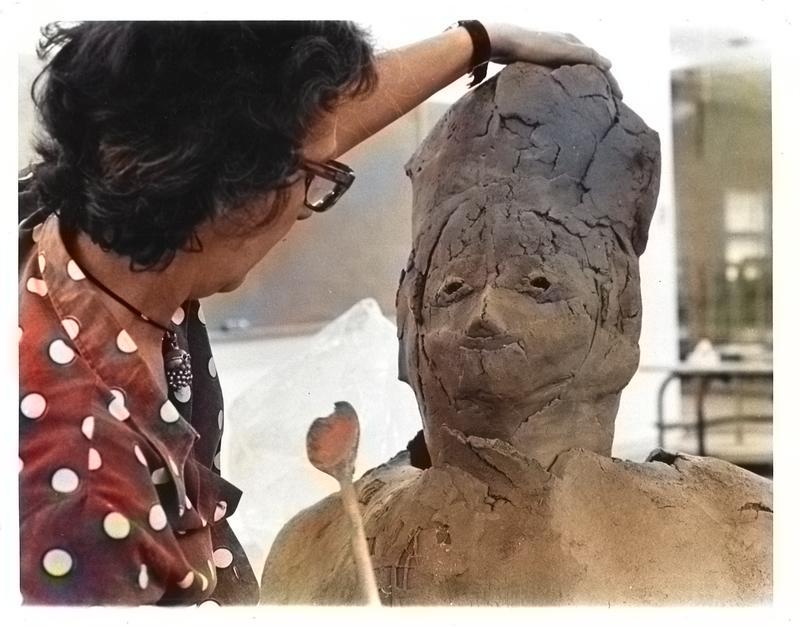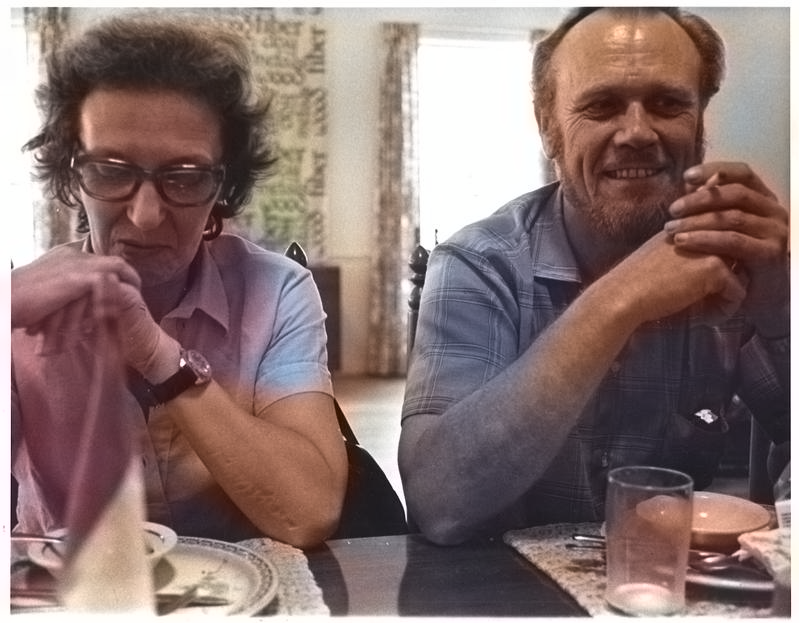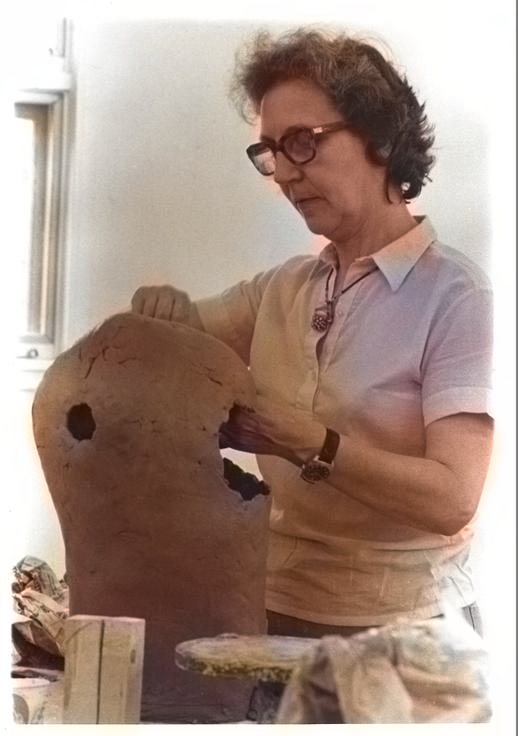Carmen Dionyse

(1921-2013) born and lived in Ghent, Belgium
Bust, 1975
stoneware, 23.5 x 17 x 9 inches, 93.39.226
From 1938 to 1946 Dionyse studied painting, printmaking, and applied arts at the Royal Academy of Fine Arts in her home town of Ghent, Belgium. It was at school where she met her husband, abstract artist Fons De Vogelaere. Dionyse returned to her alma mater study ceramics from 1955 to 1958, and in 1956 she set up her first studio in Ghent, earning membership to International Academy of Ceramics by 1967. From 1968 to 1984 Dionyse taught at the Royal Academy of Fine Arts in Ghent. [1]
In her art, Dionyse brought an original approach in responding to ancient stories and cultural rites and rituals. She is known for her sculptural busts and masks that drew inspiration from and were sometimes named after Biblical and Greek mythological figures.
In the spring of 1971, under the auspices of the International Academy of Ceramics, the Tennessee Arts Commission pledged its support for the promotion and establishment of the U.S. International Ceramic Symposiums. The Symposium’s mission to help develop a worldwide network of support for ceramic art was achieved by bringing together top ceramic artists from around the world for a month-long sharing of ideas and creation of innovative ceramics.



Left: Dionyse works on a large sculptural form, 93.39.226 – “Bust” She is paddling the surface. Center: Dionyse (left) and Victor Brosz (right), photo is from the 1975 ICS catalogue Right: Dionyse hand builds a large sculptural stoneware bust
Dionyse represented Belgium at the Second U.S. International Ceramic Symposium, which consisted of twelve artists from seven different countries, and was hosted in the summer of 1975 at the Arrowmont School of Crafts in Gatlinburg, TN. At the Symposium, she created one of her distinctive bust forms by pinching together small slabs to build a structural form. She achieved a unique subtle surface quality by sprinkling powdered glaze onto the wet clay throughout the whole construction process and then firing the work in an oxidation atmosphere. For Dionyse, the Symposium was an important time in which she could take a break from her teaching and studio practice to focus on sculptural forms.
Dionyse has works in the collections of the Museum Contemporary Art and and the Art and Crafts Museum in Ghent, Belgium; the Royal Museum of Contemporary Arts in Brussels, Belgium; the Museum Ariana in Geneva, Switzerland; the Museum of Contemporary Ceramics in Beychne, Czechoslovakia; the Museum of International Ceramics in Faenza, Italy; the Glenbow Museum in Calgary, Alberta, Canada; the National Gallery of Victoria in Melbourne, Australia; the Power House Museum in Sidney, Australia; and the Museum of Contemporary Ceramic Art in Shigaraki, Japan.[2] Her work has garnered a number of awards, including the 1973 Grand Prize at the Ceramics International in Calgary, Alberta, Canada. In 1992 a monograph of her work was published that places her work in an aesthetic and cultural context.
[1] Dionyse, Carmen. Capriolus Contemporary Ceramics. Retrieved from: http://www.capriolus.nl/en/content/dionyse-carmen
[2] Carmen Dionyse. Kunstforum Solothurn. Retrieved from : http://www.kunstforum.cc/dionyse.html
Written by Aiden Layer, TN Arts Intern

